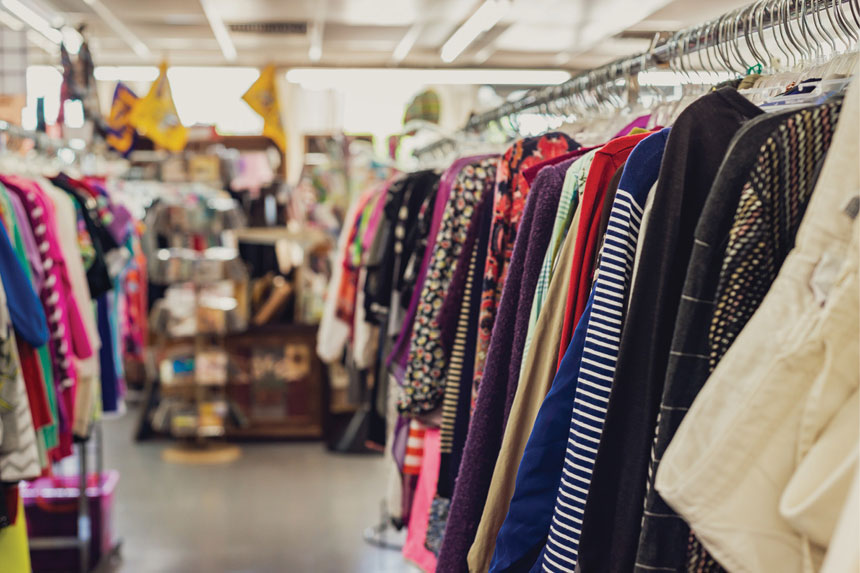About a year ago, a middle-aged woman walked into a Goodwill store in Hanover County, Virginia, where a green-and-burgundy glass vase caught her eye. She paid $3.99 to take it home. And … I think you may know where this is going. It was soon discovered that the vase was a rare piece by a prominent Italian artisan. At auction, it fetched $107,100. “This was a gift from the thrifting gods,” the president of the auction house told The Washington Post.
Several months ago an 18-year-old spent $8.70 for a tattered athletic jacket in a Portland, Oregon, thrift shop. It would constitute a “cool” addition to his wardrobe, he thought. No doubt you’ve already leaped ahead, being the magnificently intuitive person you are. Indeed, sport-apparel authenticators believe the jacket was owned by baseball Hall of Famer Ernie Banks during his Chicago Cubs rookie season. It might sell for as much as $25,000 at auction, they say.
And then there’s me, deeper into my years than either of the aforementioned shoppers but no less enthusiastic about scoring an Instagram-worthy deal. Recently, preparing to write this piece, I wandered into a local thrift. As it happens, I was wearing a black T-shirt for which I’d paid around 50 bucks. Hanging from one of the first racks I encountered was — you guessed it — the exact same shirt. It appeared to have been unworn. $5.99. So, that’s how it goes in the increasingly popular world of thrifting: You can be smart or you can be lucky. Or, like me, you can walk out of a place feeling like a chump.
For millions of Americans, thrifting — secondhand shopping, as some call it — is not merely a trend; it’s a way of life. Why would you purchase clothing, housewares, and furniture in a humble thrift shop rather than from a brick-and-mortar or internet retailer? Well, because items there are far more affordable, for one. Additionally, you may think it’s a great way to purchase unique merch that expresses your individuality. Or you may be particularly conscious of the environment and our culture’s propensity toward casual wastefulness. Another incontestable explanation: Thrifting can be fun.
One national study indicated that those who regularly buy at thrifts (as opposed to online sites such as the RealReal) save an average of $1,760 a year. For many, especially during tough economic times, the rock-bottom prices are definitely the main draw.
Surprisingly, according to Statista, about two-thirds of Americans at least occasionally patronize thrift stores — including shoppers from the upper-upper economic tier. (You may have noticed the parking lots dotted with cars costing into six figures.) Gen Z’ers, with a passion for showcasing their creativity, are leading the way, especially with respect to fashion. So too style-savvy Hollywood actors who love purchasing rare vintage items in thrift boutiques. Globally, the market is well on its way to reaching a value of $350 billion. Bottom line: There’s a ton of money in the business of secondhand shopping.
Some critics have carped — counterintuitively, it seems — that thrifting can be financially imprudent. Better to swap, they argue. They may have a point, but swapping totally dismisses the serendipity of stumbling upon something as rare and cool as a combination toilet paper holder and AM radio, as some lucky person recently did in Austin. For millions of thrifters, the satisfaction is in the adventure. That joy, I say, should not be discounted.
In the July/August issue, Cable Neuhaus wrote about front porch culture.
This article is featured in the September/October 2024 issue of The Saturday Evening Post. Subscribe to the magazine for more art, inspiring stories, fiction, humor, and features from our archives.
Become a Saturday Evening Post member and enjoy unlimited access. Subscribe now




Comments
Your reasons for thrift store shopping are all spot-on but you left out the biggest reason of all: most thrift stores are run by non-profit organizations that benefit charitable causes. Now, you can save money, not generate more waste in the environment, find one of a kind items, AND help your community!
My son noticed something about a painting that a friend bought because he liked the frame. It turned out to be worth about 16k. Until this happened, I was a doubter about all the stories I had been told. But I have thrifted, with my Mom, all my life. My Dad once asked why, when we could buy at regular stores with no problem. I think he finally understood when I explained that if I could save $100 on something, then that was $100 that I could spend on something else. Besides, it’s fun finding bargains!
I love shopping at my local thriftstores. Competing against the Ogorek’s before they get there is all part of the challenge.
Brick and mortar stores often have uppity employees who are either annoyed you are shopping there or are smirking, as if the store is somehow doing you a great favor.
I can’t think of a more satisfying way to vote with my cash than to turn and walk away from the smug environment.
Bed Bath and Forget It
Did you buy the thrift shop t-shirt? I think my son calls that buying down. If you had then the two would have cost you about $23 a piece! Les than half of your original purchase! 😉
I enjoy thrift shops and in a way I am sorry that S.E.P. published this article. The prices are already going up and this article just encourages more people to shop this way — even if they can afford the full price, especially for articles of clothing.
That’s the way of the market, I guess.
My wife loves Goodwill Stores and fortunately we have one near us in our rural area. She has found some fantastic bargains and clothes she regularly wears to work or play in. However, it’s often a hit or miss when it comes to the furniture, electronics, and other non-apparel items.